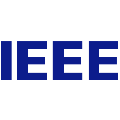Traditional deep learning (DL) models have two ubiquitous limitations. First, they assume training samples are independent and identically distributed (i.i.d), an assumption often violated in real-world datasets where samples have additional correlation due to repeat measurements (e.g., on the same participants in a longitudinal study or cells from the same sequencer). This leads to performance degradation, limited generalization, and covariate confounding, which induces Type I and Type II errors. Second, DL models typically prioritize overall accuracy, favoring accuracy on the majority while sacrificing performance for underrepresented subpopulations, leading to unfair, biased models. This is critical to remediate, particularly in models which influence decisions regarding loan approvals and healthcare. To address these issues, we propose the Fair Mixed Effects Deep Learning (Fair MEDL) framework. This framework quantifies cluster-invariant fixed effects (FE) and cluster-specific random effects (RE) through: 1) a cluster adversary for learning invariant FE, 2) a Bayesian neural network for RE, and 3) a mixing function combining FE and RE for final predictions. Fairness is enhanced through architectural and loss function changes introduced by an adversarial debiasing network. We formally define and demonstrate improved fairness across three metrics: equalized odds, demographic parity, and counterfactual fairness, for both classification and regression tasks. Our method also identifies and de-weights confounded covariates, mitigating Type I and II errors. The framework is comprehensively evaluated across three datasets spanning two industries, including finance and healthcare. The Fair MEDL framework improves fairness by 86.4% for Age, 64.9% for Race, 57.8% for Sex, and 36.2% for Marital status, while maintaining robust predictive performance.
翻译:暂无翻译




